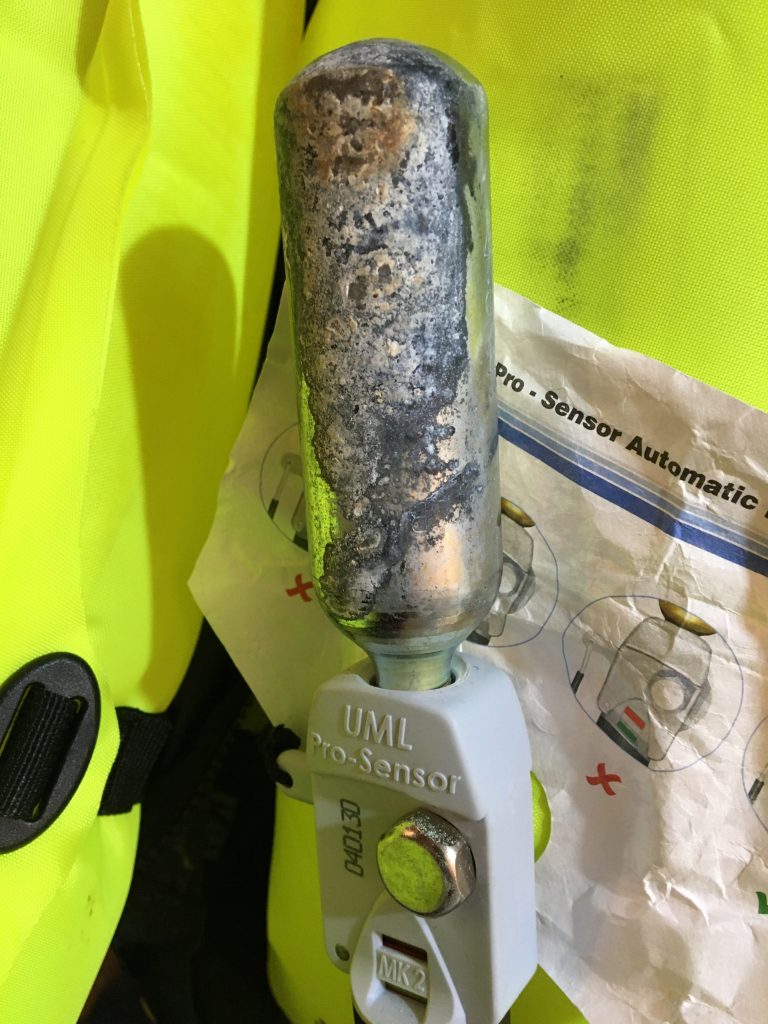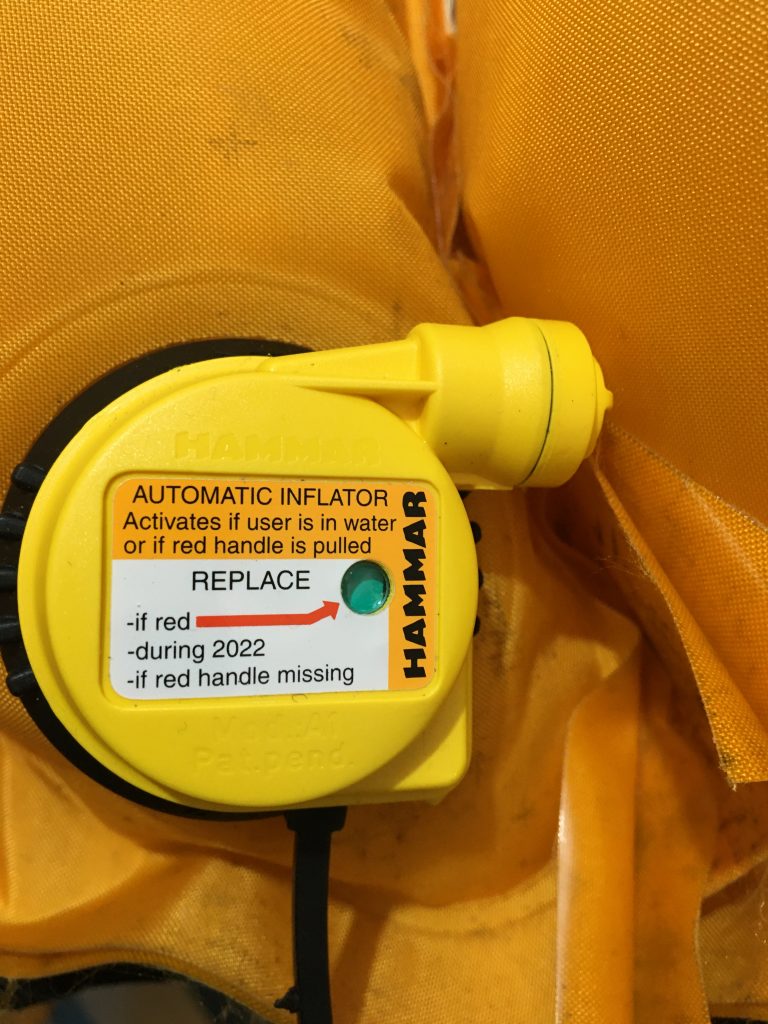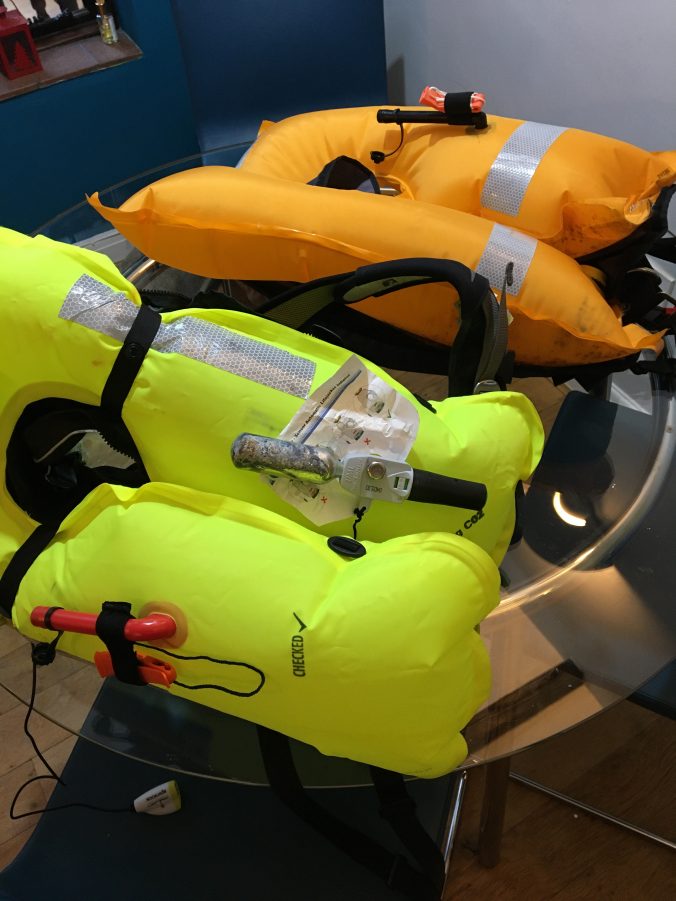If you have lots of money you can send all your lifejackets away to be checked and serviced. Or, if like me you don’t have lots of money you can do a check yourself. It is surprising how quickly time passes, and lifejackets should be checked annually. I make a point of doing the checks between Christmas and New Year when I have a bit more time on my hands and I’m usually at home instead of fishing. That way I remember to do the checks every 12 months!
This year the checks were a reminder why they are important, because they showed up a couple of potentially serious problems. It may be a cliche but lifejackets are there to save your life and if they don’t work when they are needed, then you can drown – simple as that. So it’s worth a few minutes doing these simple checks.
Step 1. Visually check the externals of the lifejacket for wear, tears, fraying, harness attachments etc. If there is damage then repair is probably out of our capability so it is best to send them away for servicing. If all good, then carry on.
Step 2. Unwrap the lifejacket, usually there is a velcro or zip fastener. Use the top-up pipe to inflate the lifejacket to a firm consistency. Leave the lifejacket blown up for 24 hours. Meanwhile, do Steps 3 to 5.
Step 3. Check the condition of the cylinder, if you can see it. If it is corroded, replace it – like mine below.

Step 4. Check any expiry dates or indicators on the automatic firing mechanism if fitted. On the Spinlock 5D above there is a Replace-By date on the firing mechanism, and coloured indicators on the body. My Crewfit lifejacket below has a Hammar mechanism. All good in this case.

Step 5. Check any other features such as spray hood and light. This was another fault on my lifejacket – the light wasn’t working. It is a sealed unit so it has to be replaced.
Step 6. After 24 hours, check that the lifejacket is still inflated and as firm as it was when first inflated. If so, all is good. If not, you have a leak. Check the seating and O ring of the firing mechanism, it could be that. If it is, replace the O ring or tighten up the mounting and leave for another 24 hours to check. If that is not the cause, the lifejacket needs to go away for professional servicing.
When you have completed all the checks and replaced anything that needs replacing, your lifejacket can be repacked and put back in use for another 12 months, ready to save a life.

Leave a Reply
You must be logged in to post a comment.